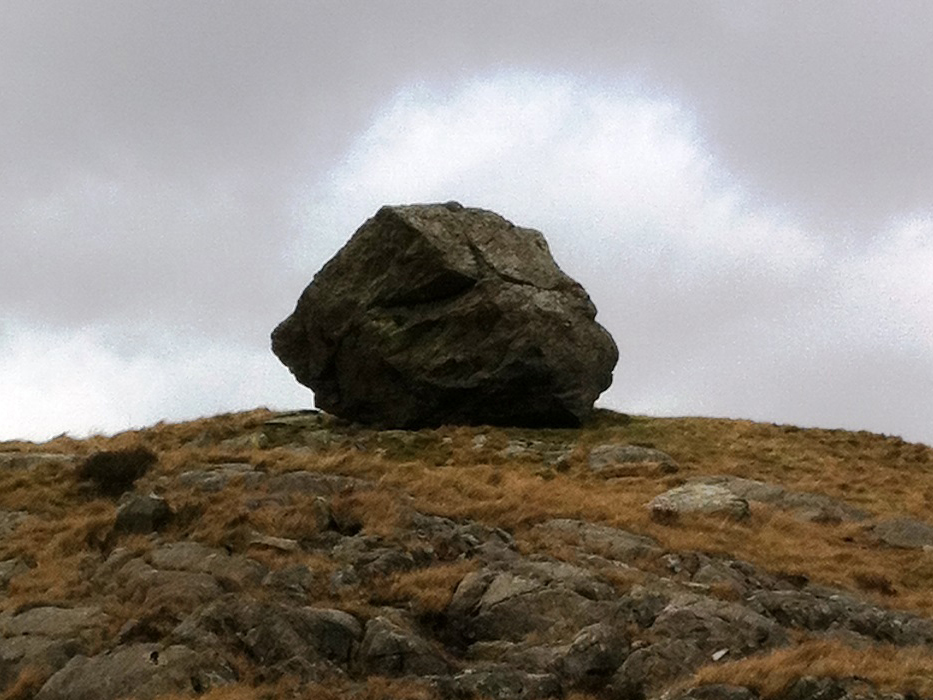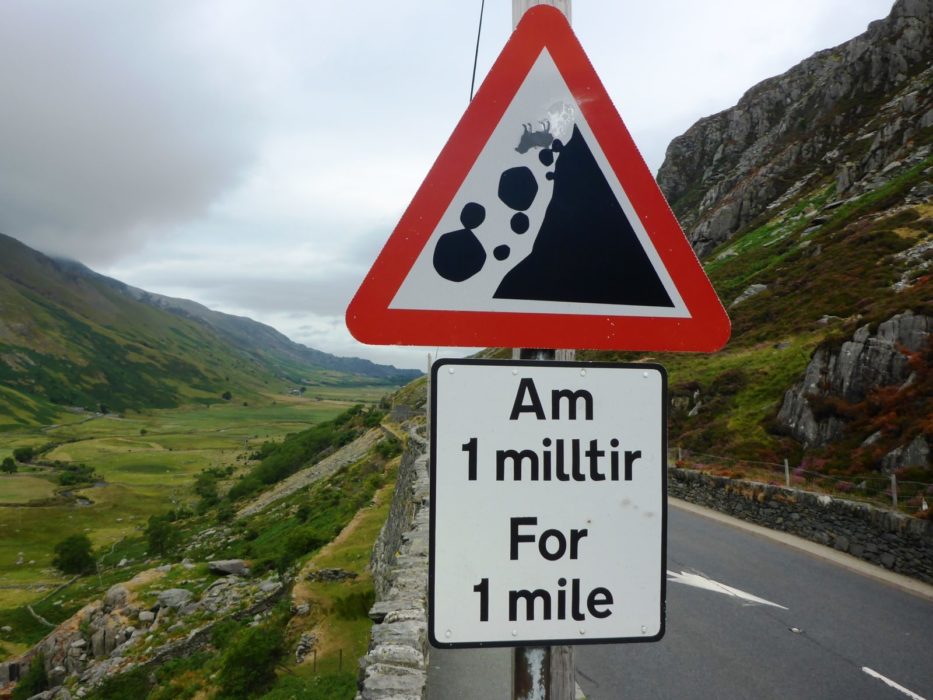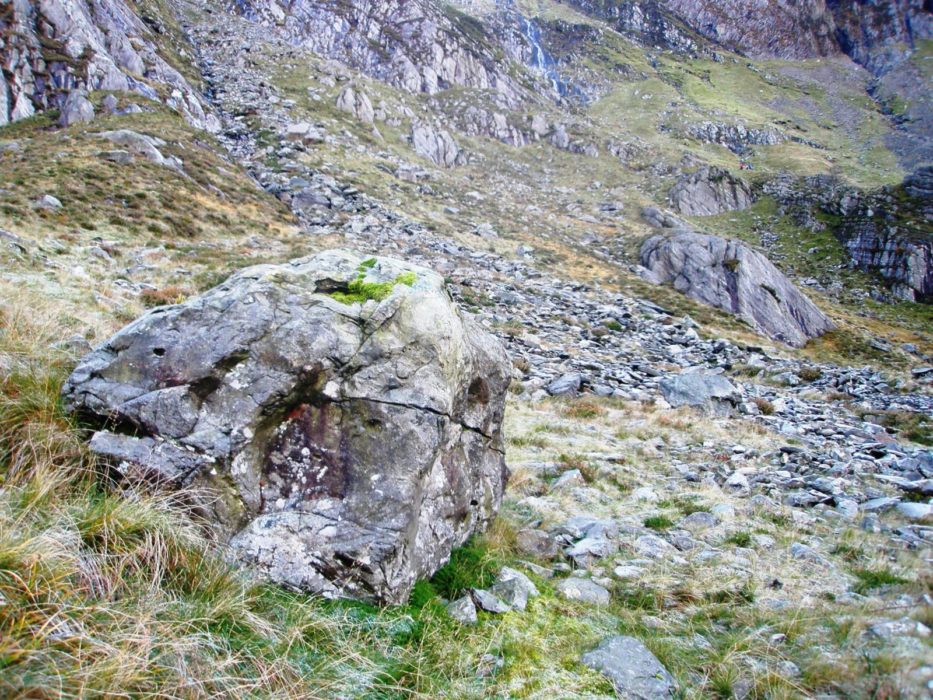Glacial Landforms
During the Ice Age, a thick layer of ice extended over a wide area of Snowdonia, and smaller glaciers formed when snow was compressed under its weight to form large bodies of moving ice that gravitated down the mountains.
These glaciers accumulated in valleys such as Cwm Idwal, Cwm Cneifion and Cwm Clyd and as they moved down the mountain slopes they scraped stones from the valley headwalls and abraded the valley floors to leave shallow hollows. As the glaciers withdrew, debris was deposited in piles that are known as moraines. There are moraines by Llyn Idwal that are known as ‘Beddau Milwyr Ynys Prydain’ (‘The Graves of Isle of Britain Soldiers’), and there is one long moraine that runs along the eastern side of the lake that, along with the hard rock on the Cwm’s northern end, forms the edges of the glacial lake – Llyn Idwal. These landforms are seen in Cwm Idwal today, and are a study subject for many students of all ages.
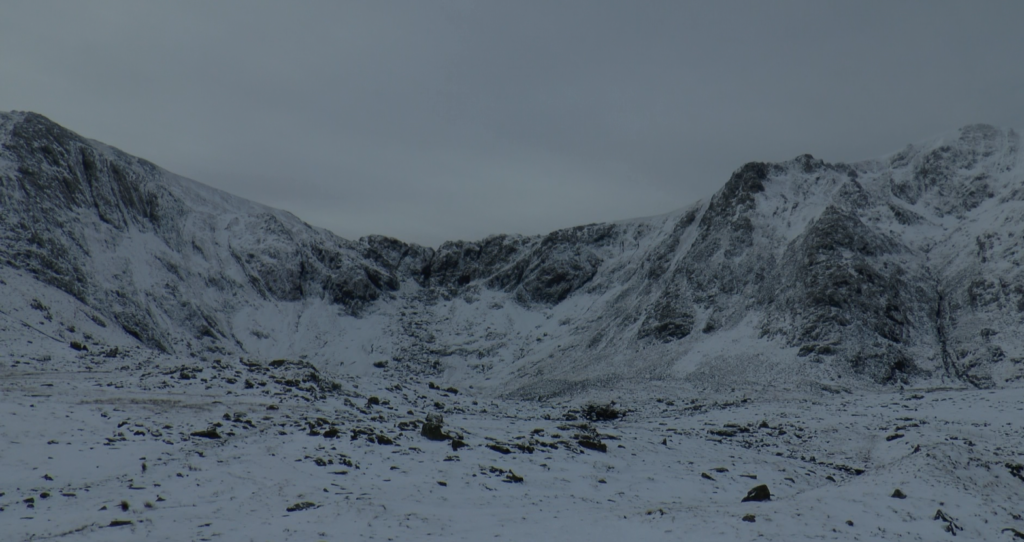
The bowl shape of Cwm Idwal is very typical of a glacial Cwm, with a steep rear and side walls, moraines and a lake.
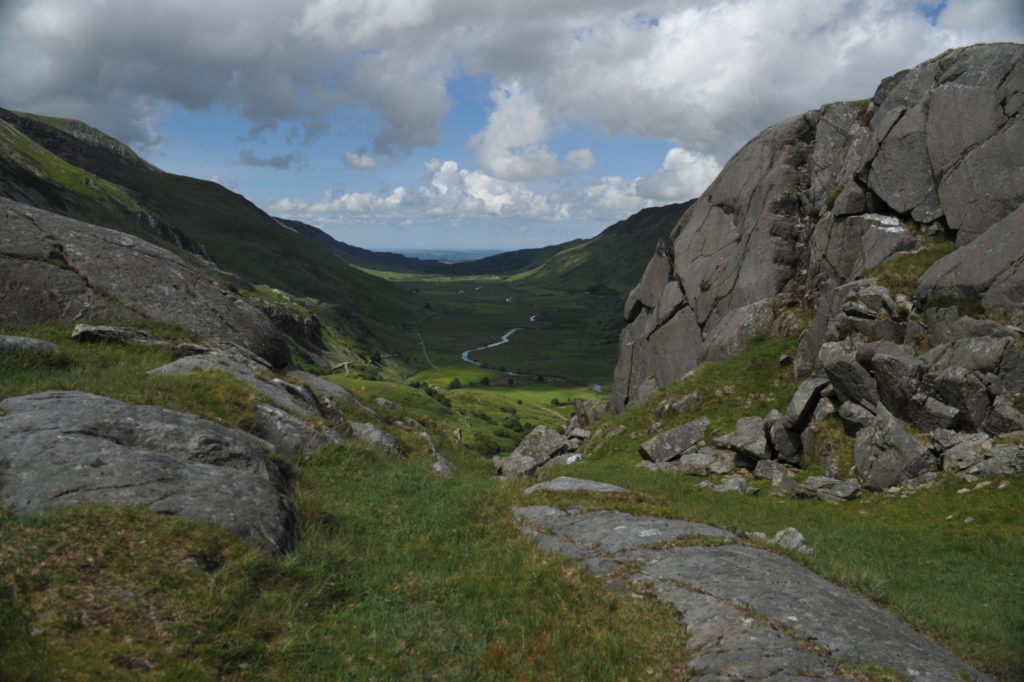
Nant Ffrancon, to the north of Cwm Idwal is an ‘U-shaped’ valley or a classic glacial trough, having a valley with steep sides, a level floor and Afon Ogwen (a misfit river) running down the valley.
